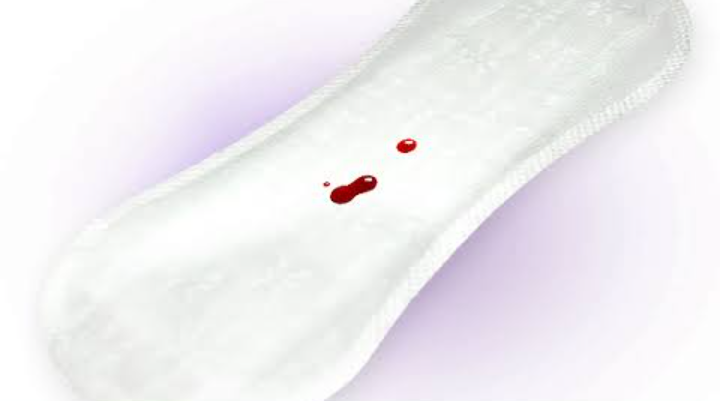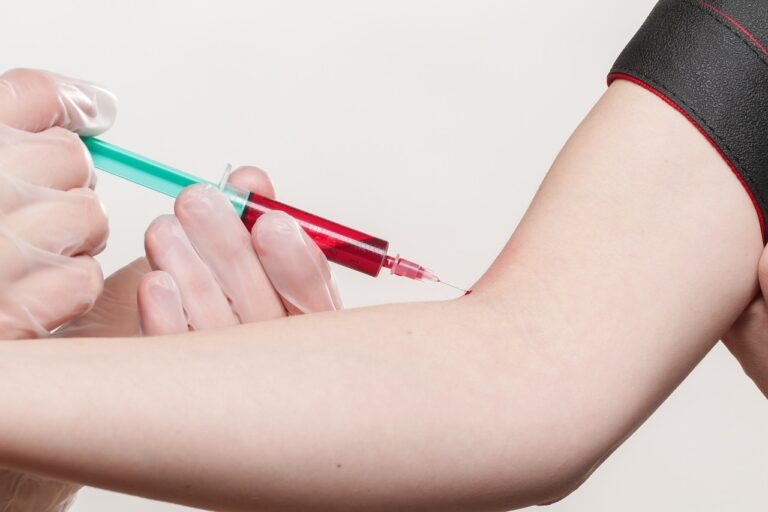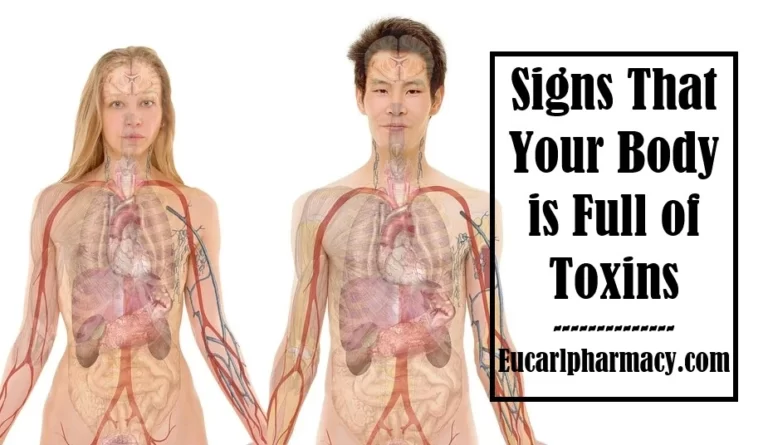What Is Hypomenorrhea? Causes, Symptoms & Treatment
Hypomenorrhea causes an estimated blood flow rate from the body that is less than 80 ml and can last for less than two days. This kind of decreased flow during the period is typically indicative of pregnancy.
The prevalence of infertility is the same as in women with normal blood flow. If you have been worrying about the sudden drop in your cycle duration and the possible causes of it, then keep reading.
Women’s monthly periods typically last four to seven days, with the duration of the entire menstrual cycle varying from 21 to 35 days. Women vary in their monthly cycle duration and blood discharge volume. It also varies based on the typical tasks a woman completes each day.
At the beginning and end of the fertile period, i. e., right beyond puberty and right before menopause, hypomenorrhea can naturally occur. This is due to anomalous ovulation at a certain time & abnormal endometrial layer development.
Inadequate cycles may sometimes result from ovulation brought on by low thyroid hormone levels, high levels of insulin, prolactin, and androgen, as well as issues with other hormones.
Hypomenorrhea is the experience of extremely light menstruation during menstrual cycles. The prefix hypo, which means lower than or under, indicates that this bleeding is regarded as being below average.
This condition could have entirely benign causes and not need any care. Other times, it may point to lingering issues that require attention.

Causes Of Hypomenorrhea
There are quite several factors that may affect a woman’s menstrual cycle. Some of these causes are so infinitesimal and may not necessarily affect the woman’s daily activities, but may be problematic in a long run. Hypomenorrhea cause encompasses but is not limited to:
Heredity
Girls with a family history of the condition may inherit hypomenorrhea. It simply means that some women have very light cycles, and this may be evident in their family history, where several generations of women have also had light cycles.
Asherman’s syndrome
This is also recognized as adhesions in the cervix and/or uterus, which can result in hypomenorrhea. Scar tissue may develop in one area of the uterus, but it frequently also results in the uterine walls adhering to one another.
In most cases, they are the result of pelvic surgeries like cesarean sections or actions taken to remove fibroids and polyps. Asherman’s syndrome can also be brought about by infections example genital tuberculosis.
Oral Contraceptive Medications Or Birth Control Medications
One of the adverse effects of combined contraceptives, or endometrial changes, is hypomenorrhea. Periods may become incredibly light when using birth control pills as well as other hormonal methods of contraception like the patch.
Some hormonal birth control methods are marketed for reducing the total number of periods per year and causing light flow. This is not a reason to be worried because it is a wanted side effect of such pills. Hypomenorrhea is typically believed to be triggered by uterine surgery that has lessened the dimensions of the uterus.
Sterilisation Technique
One of the side effects of birth control methods like the tubal sterilization procedure or tubectomy is hypomenorrhea.
The fallopian tubes of a female reproductive system are clipped and tied during a tubectomy. This stops the egg and sperm from touching after sexual activity, which ultimately prevents ovulation.
Pregnancy
Hypomenorrhea can occur in some women during the first few months of pregnancy, however, it is uncommon.
1st trimester vaginal hemorrhaging in pregnant women may not be a concern, but 2nd and 3rd trimester vaginal bleeding may be a sign of a significant medical condition. If you are expecting a child and start bleeding, call the doctor right away.
Age
One of the most important elements influencing blood flow during your period is your age. Varied age categories of women experience different levels and lengths of bleeding.
During adolescence and menopause, the blood flow is different from what is typical. The main cause of this is a hormonal imbalance.
Reduced Body Fat
Body fat percentage and weight have an immediate impact on your body’s hormones. A regular menstrual cycle is kept in place by hormones.
As a result, hypomenorrhea affects women who have lower than average body weight and fat intake.
Lactation
A woman who is lactating might suffer hypomenorrhea as a result of elevated prolactin levels.
Sheehan’s Syndrome
It is a condition marked by significant blood loss following a child. Significantificant blood loss may result in pituitary insufficiency, which causes the body to release inadequate amounts of hormones, resulting in light periods.
Stress
A series of light periods or sporadic ones that could result from high amounts of stress. It has an impact on the hormonal balance, which is necessary to keep the menstrual cycle consistent and normal. Thus, stress may result in infrequent periods.
Exercise
Physical activity elevates when people exercise regularly. Due to the dysmenorrheic effects of hard exercise, many female athletes who train frequently burn more calories.
Eating Abnormalities
A decreased appetite and anorexia can also purpose decreased weight and lead to scanty periods. Persistently terrible eating habits that include fasting or close to starvation additionally may decrease menstrual flow. Most of the time, if these are the causes, they are transient and might only affect one or two periods.
Polycystic Ovary Syndrome
In ladies with polycystic ovary syndrome, the ovaries are unable to produce the required quantity of hormones to maintain a regular menstrual cycle. This reasons irregular ovulation to interfere with the improvement of the uterine endometrium, inflicting brief periods.
Cushing’s syndrome
Cushing’s syndrome is caused by an abnormal rise in the production of the stress hormone cortisol over an extended period.
Blood pressure, blood glucose levels, inflammation, and the conversion of food into energy are all maintained by cortisol. Hypomenorrhea has several etiology, one of which is Cushing’s syndrome.
Ovarian Failure Before Its Time
Premature ovarian failure is a condition in which a woman’s ovaries stop working typically before the age of forty.
These women may also experience hypomenorrhea and infrequent menstruation because of decreased estrogen manufacturing and intermittent or absent ovulation.
Medications for epilepsy
A study states that the frequency of menstrual disturbances is excessive in an epileptic female who is on more than one drug therapy than those on monotherapy. It is additionally high in women on valproate remedy than in girls on carbamazepine drug therapy.
Uncontrolled Diabetes
Women with type 2 diabetes in which the blood sugar is greater than the fashionable ordinary value, reap weight over a length of time and are at a higher risk of creating menstrual problems.

Risk Factors For Hypomenorrhea
Certain factors that amplify the hazard of creating hypomenorrhea encompass:
- Obesity.
- Heavy exercise.
- A sedentary lifestyle with minimal physical activity.
- Unhealthy food habits, such as ingesting a lot of junk food.
- Poor nutrition, specifically a low iron diet.
- Mental illnesses, such as anxiety, depression, and more.
- Alcohol abuse and smoking.
Prevention Of Hypomenorrhea
The following measures can be used to forestall hypomenorrhea:
- Maintaining a normal physique weight and ingesting a healthful and well-balanced food plan can assist in the prevention of hypomenorrhea.
- Give ample resting time to your thinking and body.
- Maintain precise hygiene by changing the tampons or sanitary napkins every 4 to six hours.
- Use beginning control medicines as well as different methods of contraception like condoms or intrauterine gadgets as directed using your doctor.
- Practice several leisure methods to launch stress like yoga and meditation.
- Maintain a healthy lifestyle and dietary habits. Include reasonable exercise in your regular schedule.
- Athletes have to decrease excessive workouts to decrease the threat of growing a menstrual disorder.
Hypomenorrhea Diagnosis
The following assessments can diagnose hypomenorrhea:
Ultrasound Scanning
It helps in imaging the inside organs and identifying any defects in them. An ultrasound determines the thickness of the inner uterine lining, ovary size, and ovulation stage amongst others, which can assist in diagnosis.
Blood Tests
A blood sample is accrued and tested for the ranges of a range of hormones that have a critical position in preserving normal menstruation. The stages of follicle-stimulating hormone, luteinizing hormone, insulin, prolactin, and estrogen are determined.
Dilation and Curettage
This is carried out after injecting local or universal anesthesia. During the procedure, the uterine lining is scraped off gently using sterile contraptions and tested to decide the reason for decreased blood flow.
Treatment for hypomenorrhea
Hypomenorrhea can be cured by treating the underlying cause. Hence, an excellent analysis of the condition is important for the initiation of therapy.
Your doctor can also endorse some medicines and certain changes in your lifestyle to correct the condition. The following are some treatment strategies for hypomenorrhea:
Treatment of Cushing’s syndrome
If hypomenorrhea is due to excessive tiers of the hormone cortisol or Cushing’s syndrome, treating it can be beneficial in managing menstrual troubles in women.
If the expansion in the stage of cortisol is due to a long-term remedy of glucocorticoids, your physician can also decrease your dose. As long as hypomenorrhea does now not interfere with fertility, it can also now not require treatment.
Treatment of Sheehan’s syndrome
Hormone alternative therapy is used to manipulate insufficient hormone manufacturing due to Sheehan’s syndrome.
During the therapy, the ranges of several hormones are monitored regularly, and the remedy is adjusted according to it.
Treatment of Polycystic Ovary Syndrome
Lifestyle modifications like maintaining a healthy weight or decreasing weight, normal exercise, and weight loss plan control with plenty of fruits and vegetables can assist in the management of polycystic ovary syndrome. Some medicines handle the signs and symptoms related to this condition as well.
Treatment of Premature ovarian failure
Hormonal therapy is the first line of cure in ladies with premature ovarian failure. This therapy must be persisted until the girl reaches the common age of menopause, which is about 50 to fifty-one years of age.
Treatment of Hereditary hypomenorrhea
Scanty periods due to hereditary reasons can’t be treated. However, hormonal imbalance can be handled with the aid of hormone alternative therapy.
Treatment of adhesions
Hysteroscopy is used to deal with intrauterine adhesions in Asherman’s syndrome by using the use of scissors, lasers, and some other clinical gadgets to cut the adhesions.
Lifestyle management
A. Yoga.
B. Changes In Diet
Foods wealthy in iron, zinc, nutrition C, and omega-3-fatty acids, and different meals can help in correcting hypomenorrhea.
These encompass:
Iron-rich food
Increasing the intake of green leafy vegetables, crimson meat, oysters, liver, pumpkin seeds, and nuts can expand the iron content in your blood and help in preventing as well as treating anemia and hypomenorrhea.
Omega-3 Fatty Acid-rich diet
Increasing the intake of halibut, salmon, and cod, which are excellent sources of omega-3-fatty acids can assist in enhancing the function of ovaries and enhance the degree of blood flow. They additionally make bigger hormone production in your body.
Zinc-containing food
The right amount of oysters, pumpkin seeds, spinach, sesame, and sunflower seeds can assist in preserving zinc degrees inside the finest range. Zinc aids in preserving a healthy degree of the hormones estrogen and progesterone inside your body.
Sesame seeds
It has blood-thinning effects. Hence they may additionally assist in prolonging the period of light periods. However, they have to now not be consumed extra as there is a hazard of excessive blood flow.
Additionally, people who are using blood thinners should avoid sesame seeds because they may worsen the effects and be harmful to their health.
Sesame seeds should be dried and then ground into a powder. Take this powdered mixture 1-2 times per day, diluted with water. Sesame oil is an additional option that you have.
Cinnamon
Like sesame seeds, cinnamon additionally has blood-thinning effects and as a consequence may extend the duration of menstrual flow. Prepare cinnamon powder, put it in heated water, and have it two to three times a day like tea.
Raw (green) papaya
Raw papaya has been known to be a “hot” fruit. Also, raw papaya carries latex which induces uterine contractions. As a result, Behere is multiplied glide throughout menstruation.
However, it has to not be eaten up extra as severe menstrual cramps can also purpose pain and pain. Eat a few slices of uncooked papaya twice a day to ride nice results.
Flax seeds
Flax seeds have estrogen-like effects. Thus, they cause make bigger in the thickness of the uterine lining.
The more the thickening, the longer the blood goes with the flow duration in menses. Add it to unsweetened yogurt and have it a few instances a day on an ordinary basis.
Complications Of Hypomenorrhea
Complications of hypomenorrhea are rare. However, the underlying circumstance might continue to worsen, leading to infertility if left untreated.
Thus, a thorough prognosis is necessary to verify that no grave sickness is underlining the symptom.
Conclusion
Hypomenorrhea is a menstrual cycle anomaly that is signified by extremely light menstruation. Inadequate cycles may sometimes result from ovulation brought on by low thyroid hormone levels, high levels of insulin, prolactin, and androgen, as well as issues with other hormones.
Hypomenorrhea can be cured via treating the underlying causes, although some may not necessitate treatment.






